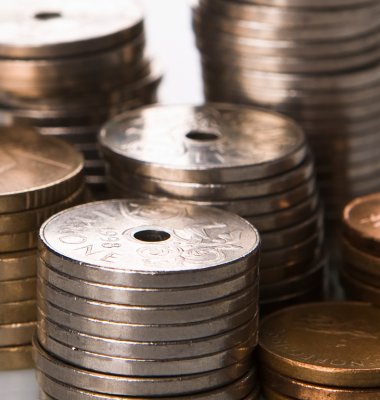It was an unusually powerful increase in the prices Norwegian manufacturing firms received for their goods from 2020 until mid-2022. But from that time and throughout 2023, this increase was dampened og prices stabilized at a high level. In 2023, the producer price index for manufacturing had a positive The general increase or decrease in value of a measure in a calendar year relative to the same measure the year before. Yearly increase or decrease is calculated by taking the ratio between the averages of the monthly indices for both years. Yearly increase/decrease must not be confused with the rolling twelve-month change, which shows the change from one month to the corresponding month the year before.of 3.8 percent, whereas in 2022 it was at a record-breaking 24.7 percent.
– The price development is a bit different in different industries, but 2023 in Norwegian manufacturing was a year of high sales prices. The record-breaking rise from 2022 came to a halt, but this far we have seen a flattening of prices at a high level rather than a fall, says Espen Kristiansen, section head at Statistics Norway.
Continued high prices on food products
Prices within the food industry rose sharply throughout the whole of 2022 until first quarter of 2023, but then started to swing more up and down.
– In 2023 the huge price increase on meat, fish, fruit, and vegetables continued in Norwegian grocery stores. Especially in the start of the year we saw this rise clearly at the producers, Kristiansen says.
Prices in the food industry in total rose by about 12 percent from 2022 to 2023, while the yearly growth rate was at 17 percent in the preceding year.
Prices on fruit and vegetables increased three times more in 2023 than 2022, while the increase was about the same in the two years for meat and meat products. The yearly increase on seafood was still strong in 2023.
2023 was especially good for Norwegian seafood exporters, well helped by a weak Norwegian krone against foreign currencies such as Euro and Dollar. The prices on the export market for seafood had an increase of about 12 percent. This was a large increase historically, although it was the double in 2022.
It was also a strong yearly price increases on mineral products and fabricated metals products from 2022 to 2023, which landed at approximately 13 and 11 percent respectively.
Weaker year for Norwegian metal producers in 2023
Prices on basic metals rose sharply in 2021 and 2022, with increases of 28 and approximately 40 percent, respectively. From 2022 to 2023 however, prices fell by 8.3 percent. Prices for basic metals is chiefly made up of iron and steel and non-ferrous metals, which is mainly controlled by prices at the international market.
Another manufacturing industry with falling prices in 2023 was the wood and wood product industry. Prices here had a surge during both 2021 and 2022. Many households used the time during the pandemic to maintenance and redecoration of houses and cabins, contributing to higher prices. Also, a massive bark beetle attack in Canada these years pushed prices upwards.
Price fall on energy goods in 2023
A decrease in prices on Consists of Extraction of oil and natural gas, refined petroleum products as well as electricity, gas and steam. of 35 percent was the main reason behind the total drop of nearly 22 percent in the PPI from 2022-2023. This was in sharp contrast to the high increase of about 52 percent in 2022. The yearly price increase in PPI excluding energy goods ended up at 7 percent in 2023.
Prices within extraction of crude oil and natural gas went heavily up both in 2021 and 2022. Largest was the increase from 2020 to 2021, with prices rising by as much as 120 percent.
Several factors contributed to the rising prices on natural gas in 2021. In the aftermath of the pandemic there was heightened demand for gas on the international market combined with higher prices on Co2 quotas. In 2022 the gas prices continued to rise, chiefly because of the war in Ukraine and subsequent concerns for the supply of natural gas in Europe.
From 2022 to 2023 however, the combined index for crude oil and natural gas fell by 40 percent.
Prices within refined petroleum products also went down in 2023 just short of 8 percent. In the preceding year this was at a quite staggering increase of 67 percent for this industry.
For electricity, gas and steam there was a price fall of almost 14 percent from 2022 to 2023. The two preceding years there were heavy increases in prices. This price rise followed by a downturn is strongly correlated with the price development on natural gas.
New reference year starting next publication
From the publication of the January index, which will be published on 9th of February, and onwards, the reference year will be changed to 2021=100. Until December 2023 the reference year was 2015=100.
This updating will not influence the changes in the index over time. However, there may be some round-off effects which may move a decimal up or down.
